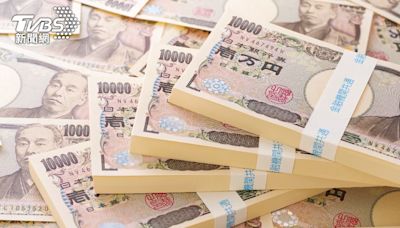搜尋結果
The U.S. ranks seventh in energy consumption per capita after Canada and a number of other countries. [349] [350] The majority of this energy is derived from fossil fuels: in 2005, it was estimated that 40% of the nation's energy came from petroleum, 23% from coal, and 23% from natural gas.
- October 1, 2022 – September 30, 2023
- 340,332,281 (August 30, 2023)
Timeline of the top 5 countries. The five countries with the largest foreign exchange reserves almost all have reserves of at least 500 billion USD and higher and have maintained such an amount for at least a week. At present there are only six countries whose reserves are at such a figure; this includes China, Japan, Switzerland, India, Russia ...
The United States dollar ( symbol: $; currency code: USD; also abbreviated US$ to distinguish it from other dollar-denominated currencies; referred to as the dollar, U.S. dollar, American dollar, or colloquially buck) is the official currency of the United States and several other countries.
according to International Monetary Fund estimates [n 1] [1] Countries by nominal GDP in 2019 [n 2] > $20 trillion. $10–20 trillion. $5–10 trillion. $1–5 trillion. $750 billion – $1 trillion. $500–750 billion. $250–500 billion.
- History
- Currencies That Use The Dollar Sign
- One Stroke vs. Two Strokes
- Use in Computer Software
- Other Uses
- See Also
Use for the Spanish American peso in the late 1700s
The symbol appears in business correspondence in the 1770s from Spanish America, the early independent U.S., British America and Britain, referring to the Spanish American peso, also known as "Spanish dollar" or "piece of eight" in British America. Those coins provided the model for the currency that the United States adopted in 1792, and for the larger coins of the new Spanish American republics, such as the Mexican peso, Argentine peso, Peruvian real, and Bolivian solcoins. With the Coinage...
Earlier history of the symbol
It is still uncertain, however, how the dollar sign came to represent the Spanish American peso. There are currently several competing hypotheses: 1. The most widely accepted theory holds that the sign grew out of the Spanish and Spanish American scribal abbreviation "ps" for pesos. A study of late 18th- and early 19th-century manuscripts shows that the s gradually came to be written over the p, developing into a close equivalent to the "$" mark. Oliver Pollock, a wealthy Irish trader and ear...
Less likely theories
The following theories seem to have been discredited or contradicted by documentary evidence: 1. In 1937, historian James Alton James claimed that the symbol with two strokes was an adapted design of patriot Robert Morrisin 1778, in letters written to Pollock. 2. In 1939, H. M. Larson suggested that the sign could derive from a combination of the Greek character "psi" (ψ)and "S". 3. A theory claims that the sign started off as a monogram of "US", with a narrow "U" superimposed on the "S"; the...
As symbol of the currency
The numerous currencies called "dollar" use the dollar sign to express money amounts. The sign is also generally used for the many currencies called "peso" (except the Philippine peso, which uses the symbol "₱"). Within a country the dollar/peso sign may be used alone. In other cases, and to avoid ambiguity in international usage, it is usually combined with other glyphs, e.g. CA$ or Can$ for Canadian dollar. Particularly in professional contexts, the unambiguous ISO 4217 three letter code(AU...
Use in the Portuguese Empire
In Portugal, Brazil, and other parts of the Portuguese Empire, the two-stroke variant of the sign (with the name cifrão; (Portuguese pronunciation: [siˈfɾɐ̃w] ⓘ) was used as the thousands separator of amounts in the national currency, the real (plural "réis", abbreviated "Rs."): 123500 meant "123500 réis". This usage is attested in 1775, but may be older by a century or more. It is always written with two vertical lines: . It is the official sign of the Cape Verdean escudo (ISO 4217: CVE). In...
In some places and at some times, the one- and two-stroke variants have been used in the same contexts to distinguish between the U.S. dollar and other local currency, such as the former Portuguese escudo. However, such usage is not standardized, and the Unicode specification considers the two versions as graphic variants of the same symbol—a typef...
Because of its use in early American computer applications such as business accounting, the dollar sign is almost universally present in computer character sets, and thus has been appropriated for many purposes unrelated to money in programming languages and command languages.
The symbol is sometimes used derisively, in place of the letter S, to indicate greed or excess money such as in "Micro$oft", "Di$ney", "Chel$ea" and "GW$"; or supposed overt Americanisation as in "$ky". The dollar sign is also used intentionally to stylize names such as A$AP Rocky, Ke$ha, and Ty Dolla $ign or words such as ¥€$. In 1872, Ambrose Bie...
Four UN members (Cuba, Liechtenstein, Monaco and North Korea) do not belong to the IMF hence their economies are not ranked below. Kosovo, despite not being a member of the United Nations, is a member of IMF. Taiwan is not a IMF member but it is still listed in the official IMF indices. Several leading GDP-per-capita (nominal) jurisdictions may ...
Jerome Hayden " Jay " Powell (born February 4, 1953) is an American attorney and investment banker who has served since 2018 as the 16th chair of the Federal Reserve . After earning a degree in politics from Princeton University in 1975 and a Juris Doctor from Georgetown University Law Center in 1979, [2] he moved to investment banking in 1984 ...



